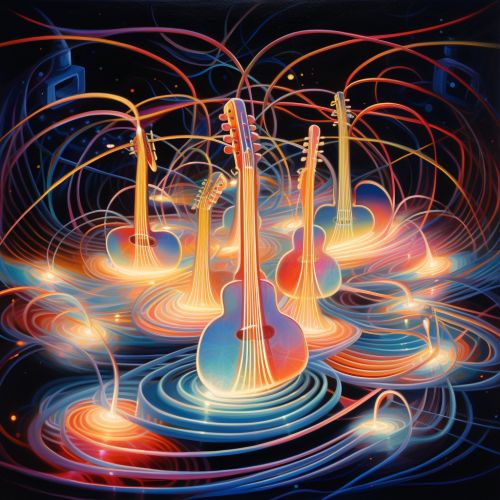Theoretical Approaches to Quantum Gravity
Introduction
Quantum gravity is a theoretical framework that attempts to reconcile the principles of quantum mechanics and general relativity, the two major pillars of modern physics. The main objective of quantum gravity is to formulate a quantum theory of gravity that is consistent with the other fundamental forces of nature, namely the strong, weak, and electromagnetic forces.


The Need for Quantum Gravity
The necessity for a quantum theory of gravity arises from the apparent incompatibility between general relativity and quantum mechanics. General relativity describes gravity as a geometric property of spacetime, while quantum mechanics describes the other fundamental forces in terms of quantum fields. These two descriptions are fundamentally different and cannot be reconciled within the existing theoretical framework.
Approaches to Quantum Gravity
There are several different approaches to quantum gravity, each with its own set of assumptions and theoretical constructs. These include string theory, loop quantum gravity, and quantum field theory in curved spacetime, among others.
String Theory
String theory is a theoretical framework in which the point-like particles of particle physics are replaced by one-dimensional objects called strings. In string theory, gravity is described as arising from the vibration of these strings. This approach has the advantage of naturally incorporating quantum mechanics, but it also requires the existence of extra dimensions, which have not yet been observed.


Loop Quantum Gravity
Loop quantum gravity is another approach to quantum gravity that attempts to quantize spacetime itself. In this approach, spacetime is viewed as a network of loops and nodes, with the nodes representing quantum states of the gravitational field. Loop quantum gravity predicts that spacetime is discrete at the smallest scales, which could have implications for the early universe and black holes.


Quantum Field Theory in Curved Spacetime
Quantum field theory in curved spacetime is an approach that attempts to apply the principles of quantum field theory to a curved spacetime background. This approach treats gravity as a classical field, while the other forces are treated quantum mechanically. While this approach has been successful in certain regimes, it is not a complete theory of quantum gravity.
Challenges in Quantum Gravity
Despite the many different approaches to quantum gravity, there are several key challenges that remain. These include the problem of time, the issue of non-locality, and the question of how to incorporate the principles of quantum mechanics into a theory of gravity.
The Problem of Time
In quantum mechanics, time is treated as a parameter, while in general relativity, it is treated as a dynamical variable. This discrepancy leads to the so-called problem of time in quantum gravity, which is one of the major obstacles in formulating a consistent theory.
The Issue of Non-Locality
Quantum mechanics is inherently non-local, meaning that events can be correlated across arbitrary distances. This is in stark contrast to general relativity, which is a local theory. Reconciling these two aspects is a major challenge in the development of a quantum theory of gravity.
Incorporating Quantum Mechanics
One of the main challenges in quantum gravity is how to incorporate the principles of quantum mechanics into a theory of gravity. This includes the principles of superposition, entanglement, and wave-particle duality, among others.
Implications of Quantum Gravity
The development of a successful theory of quantum gravity could have profound implications for our understanding of the universe. It could shed light on the nature of black holes, the origin of the universe, and the fundamental structure of spacetime.


Conclusion
Quantum gravity is one of the most challenging and exciting areas of theoretical physics. Despite the many obstacles, the quest for a quantum theory of gravity continues to drive the development of new mathematical tools and conceptual frameworks. The ultimate goal is to achieve a deeper understanding of the fundamental nature of the universe.
